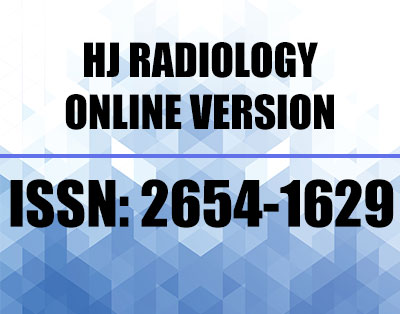Doppler association of renal artery stenosis with coronary artery disease in hypertensive versus normotensive patients
Abstract
Background: The most frequent cause of renal artery stenosis (RAS) in adults is atherosclerosis. Renal function loss and elevated blood pressure (hypertension) are potential causes of renal artery stenosis (RAS) development. Due to poor systemic blood flow to the kidneys, renal artery stenosis (RAS) may also be linked to low blood pressure. Additionally, the kidneys secrete hormones that control blood pressure. Renal artery stenosis (RAS) carries a substantial mortality risk in people with Coronary artery disease (CAD) and is linked to early cardiovascular (CV) events.
Objective: To find the Doppler association of renal artery stenosis with coronary artery disease in hypertensive versus normotensive patients.
Material and Methods: This was a case control study, conducted at Radiology/Cardiology departments of Mardan Medical Complex (MMC), Mardan for duration of 9 months. Normotensive patients and hypertensive patients both with Coronary artery disease (CAD) were included in this study. All patients with known kidney disease were excluded from the study.
Results: A total 90 patients were included in study with equal distribution in both groups (hypertensive N=45, normotensive N=45). The patients included in normotensive group had mean age of 46.1±15.8 while hypertensive patients group had mean age of 45.04±9.7.
Conclusion: The study concluded that progression of Renal Artery Stenosis (RAS) had a strong association with development of Coronary artery disease (CAD).
Keywords
Full Text:
PDFReferences
Garovic VD, Textor SC. Renovascular hypertension and ischemic nephropathy. Circulation. 2005 Aug 30;112(9):1362-74.
Conlon PJ, Little MA, Pieper K, Mark DB. Severity of renal vascular disease predicts mortality in patients undergoing coronary angiography. Kidney international. 2001 Oct 1;60(4):1490-7.
Edwards MS, Craven TE, Burke GL, Dean RH, Hansen KJ. Renovascular disease and the risk of adverse coronary events in the elderly: a prospective, population-based study. Archives of internal medicine. 2005 Jan 24;165(2):207-13.
Bettmann MA, Dake MD, Hopkins LN, Katzen BT, White CJ, Eisenhauer AC, et al. Atherosclerotic vascular disease conference. Writing Group VI: Revascularization. Circulation 2004; 109:2643–2650.
Turi ZG, Jaff MR. Renal artery stenosis: searching for the algorithms for diagnosis and treatment. J Am Coll Cardiol 2003; 41:1312–1315.
Weinrauch LA, D'Elia JA. Renal artery stenosis: ‘fortuitous diagnosis’, ‘problematic therapy’. J Am Coll Cardiol 2004; 43:1614–1616.
Pasternak RC, Criqui MH, Benjamin EJ, Fowkes GR, Isselbacher EM, McCullough PA, et al. Atherosclerotic vascular disease conference. Writing Group I: Epidemiology. Circulation 2004; 109:2605–2612.
Fujii H, Kono K, Nishi S. Characteristics of coronary artery disease in chronic kidney disease. Clinical and experimental nephrology. 2019 Jun 1;23:725-32.
Zandparsa A, Habashizadeh M, Farsani EM, Jabbari M, Rezaei R. Relationship between renal artery stenosis and severity of coronary artery disease in patients with coronary atherosclerotic disease. International Cardiovascular Research Journal. 2012 Sep;6(3):84.
Park S, Jung JH, Seo HS, Ko YG, Choi D, Jang Y, et al. The prevalence and clinical predictors of atherosclerotic renal artery stenosis in patients undergoing coronary angiography. Heart and vessels. 2004;19(6):275–9.
Radermacher J, Chavan A, Bleck J, Vitzthum A, Stoess B, Gebel MJ, Galanski M, Koch KM, Haller H. Use of Doppler ultrasonography to predict the outcome of therapy for renal-artery stenosis. New England Journal of Medicine. 2001 Feb 8;344(6):410-7.
Anagnostis P, Vaitsi K, Mintziori G, Goulis DG, Mikhailidis DP. Non-coronary atherosclerotic cardiovascular disease in patients with familial hypercholesterolaemia. Current Medical Research and Opinion. 2020 May 3;36(5):731-40.
Safian RD. Renal artery stenosis. Progress in cardiovascular diseases. 2021 Mar 1;65:60-70.
McClelland RL, Chung H, Detrano R, Post W, Kronmal RA. Distribution of coronary artery calcium by race, gender, and age: results from the Multi-Ethnic Study of Atherosclerosis (MESA). Circulation. 2006 Jan 3;113(1):30-7.
Mehta PK, Bess C, Elias-Smale S, Vaccarino V, Quyyumi A, Pepine CJ, Bairey Merz CN. Gender in cardiovascular medicine: chest pain and coronary artery disease. European heart journal. 2019 Dec 14;40(47):3819-26.
Andayesh M, Shahidian A, Ghassemi M. Numerical investigation of renal artery hemodynamics based on the physiological response to renal artery stenosis. Biocybernetics and Biomedical Engineering. 2020 Oct 1;40(4):1458-68.
Courand PY, Dinic M, Lorthioir A, Bobrie G, Grataloup C, Denarie N, Soulat G, Mousseaux E, Sapoval M, Azizi M, Amar L. Resistant hypertension and atherosclerotic renal artery stenosis: effects of angioplasty on ambulatory blood pressure. A retrospective uncontrolled single-center study. Hypertension. 2019 Dec;74(6):1516-23.
Maw AM, Thompson LE, Ho PM, Kennedy KF, Maddox TM, Valle JA, Sandhu A, Masoudi FA, Messerli FH, Daugherty SL. Implications of guideline updates for the management of apparent treatment resistant hypertension in the United States (a NCDR research to practice [R2P] project). The American journal of cardiology. 2020 Jan 1;125(1):63-7.
Abd Elrahim E. Computed tomography evaluation of renal artery morphometry in adults: The impact of age and gender. Saudi medical journal. 2020 Jan;41(1):34.
Hinchliffe RJ, Forsythe RO, Apelqvist J, Boyko EJ, Fitridge R, Hong JP, Katsanos K, Mills JL, Nikol S, Reekers J, Venermo M. Guidelines on diagnosis, prognosis, and management of peripheral artery disease in patients with foot ulcers and diabetes (IWGDF 2019 update). Diabetes/metabolism research and reviews. 2020 Mar;36:e3276.
DOI: http://dx.doi.org/10.36162/hjr.v10i1.639
Refbacks
- There are currently no refbacks.







